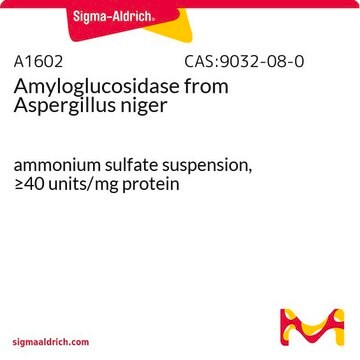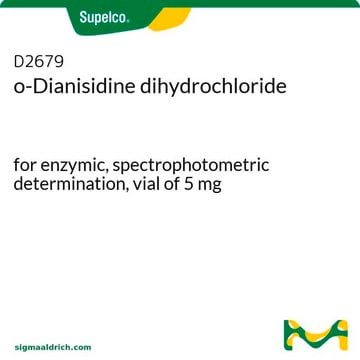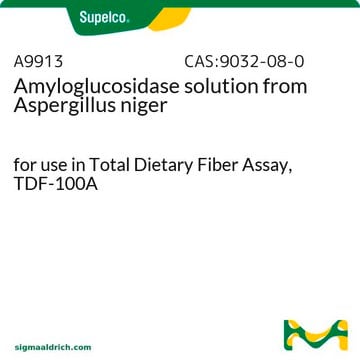P7119
PGO Enzyme Preparation
1 G capsules
Synonyme(s) :
Peroxidase - Glucose oxidase preparation
About This Item
Produits recommandés
Forme
powder
Solubilité
H2O: soluble capsule/100 mL at 25 °C, clear, colorless (pH 6.95-7.05)
Température de stockage
2-8°C
Description générale
Application
- in diet sampling and chemical analyses
- to determine plasma and follicular fluid glucose levels
- to measure glucose content in fractions of retrograded debranched rice starch
Actions biochimiques/physiologiques
Adéquation
Notes préparatoires
Mention d'avertissement
Danger
Mentions de danger
Conseils de prudence
Classification des risques
Resp. Sens. 1
Code de la classe de stockage
13 - Non Combustible Solids
Classe de danger pour l'eau (WGK)
WGK 1
Point d'éclair (°F)
Not applicable
Point d'éclair (°C)
Not applicable
Équipement de protection individuelle
dust mask type N95 (US), Eyeshields, Faceshields, Gloves
Certificats d'analyse (COA)
Recherchez un Certificats d'analyse (COA) en saisissant le numéro de lot du produit. Les numéros de lot figurent sur l'étiquette du produit après les mots "Lot" ou "Batch".
Déjà en possession de ce produit ?
Retrouvez la documentation relative aux produits que vous avez récemment achetés dans la Bibliothèque de documents.
Les clients ont également consulté
Notre équipe de scientifiques dispose d'une expérience dans tous les secteurs de la recherche, notamment en sciences de la vie, science des matériaux, synthèse chimique, chromatographie, analyse et dans de nombreux autres domaines..
Contacter notre Service technique












